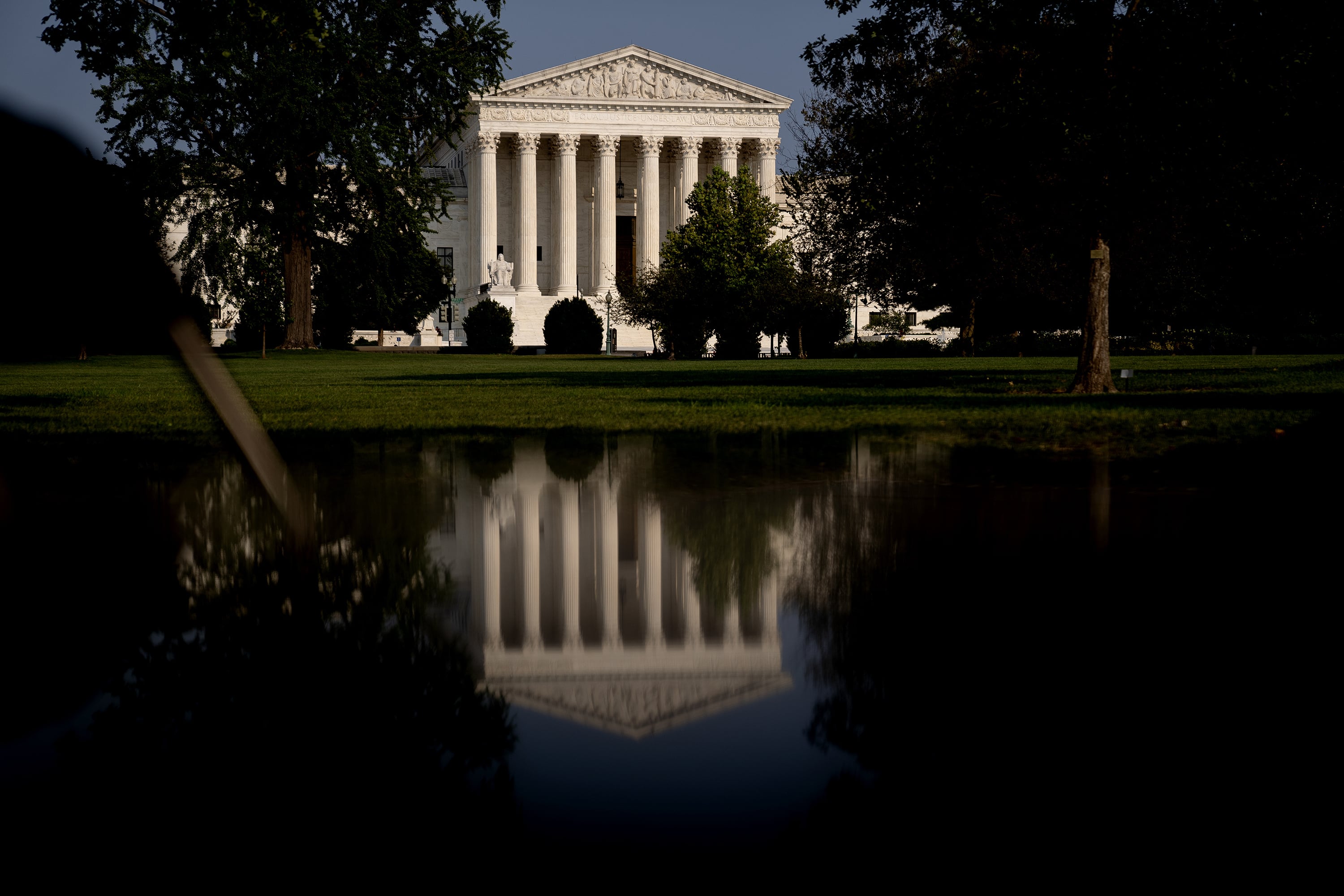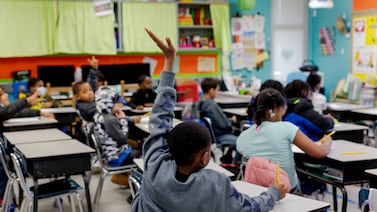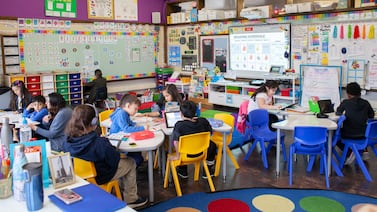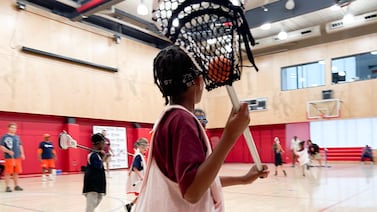Sign up for Chalkbeat’s free weekly newsletter to keep up with how education is changing across the U.S.
The Supreme Court announced Tuesday that it will not hear a case challenging the constitutionality of a highly selective Virginia high school’s admissions policy on the grounds that it discriminates against Asian American students.
The high court’s decision not to take the case means that last year’s ruling by an appeals court upholding the admissions policy will stand. The case, known as Coalition for TJ v. Fairfax County School Board, looked at whether the school board was legally allowed to change the entrance criteria for a prestigious magnet high school in Alexandria, Virginia, with the intent of enrolling a more diverse class.
The Supreme Court has long held that school districts can consider race-neutral factors to create more diverse schools. But the plaintiffs in this case alleged the school board used certain criteria as “proxies” for race, with the intent of reducing the share of Asian American students who were admitted to the school.
The case was closely watched because many school districts use similar methods to create diverse student bodies. If the Supreme Court had taken the case, it could have had sweeping consequences for magnet schools and other selective K-12 programs, legal experts say.
Still, observers say it likely won’t be the end of legal challenges to selective K-12 admissions. The same law firm that brought this case, for example, has challenged similar admissions policies for selective schools in Boston, New York City, and New York state.
“I do think given the number of cases that are percolating through different districts and courts of appeals, that it’s probably true that there will be additional attempts to revisit this issue before the Supreme Court,” said Cara McClellan, a practice associate professor of law at the University of Pennsylvania, who has written about legal challenges to race-conscious admissions. “It continues to be a hotly contested issue.”
In a Tuesday statement, the chair of the Fairfax County School Board said the decision put to rest a three-year legal battle over the fairness of the admissions policy change.
“We have long believed that the new admissions process is both constitutional and in the best interest of all of our students,” Karl Frisch said. “It guarantees that all qualified students from all neighborhoods in Fairfax County have a fair shot at attending this exceptional high school.”
In a statement, the Pacific Legal Foundation, the libertarian law firm representing the plaintiffs, said by choosing not to hear the case, “the Supreme Court missed an important opportunity to end race-based discrimination in K-12 admissions.”
Admissions policy changed to include student ‘experience factors’
While the Supreme Court has shown a willingness to overturn years of legal precedent in other cases — notably by prohibiting colleges and universities from considering race as a factor in higher education admissions last year — it was apparently not willing to revisit its earlier decisions here. Notably, the Supreme Court ruled in 2007 that school districts can take certain steps to racially diversify their student bodies, so long as they do not explicitly consider the race of individual students.
In this case, the Coalition for TJ alleged that the Fairfax County School Board violated the equal protection clause of the Constitution in 2020 when it changed its policy to get into Thomas Jefferson High School for Science and Technology, a top high school that draws from five Virginia school districts.
Known as TJ, the high school offers advanced math and science classes that put its graduates on the path for elite colleges and careers. Historically, to get in, applicants needed to do well on a series of standardized tests and essays, and obtain high grades and teacher recommendations. Typically, students from just a few middle schools won most of the slots.
In 2020, shortly after the murder of George Floyd prompted a racial reckoning at many schools, school leaders sought to change the enrollment policy, pointing out that very few Black and Hispanic students gained entrance. During the 2019-20 school year, the school of around 1,800 students was 71% Asian American, 19% white, 5% multiracial, 3% Hispanic, and 2% Black, state data shows.
After months of debate, the Fairfax County School Board approved a new enrollment policy that set aside a certain share of seats at TJ from each middle school in the attendance area.
Students eligible for those seats were evaluated based on their grades, an essay, a description of their skills, and a set of “experience factors,” including whether they came from a low-income family, were an English learner, had a special education plan, or attended a middle school that had historically sent few students to TJ.
In 2021, the Coalition for TJ, which includes parents of students who had applied to TJ or planned to, sued the school board. The group argued that the middle school seat set-aside and experience factors were being used as “proxies” to “racially balance” the school, with the goal of reducing the share of Asian American students.
The appeals court disagreed, and said the school board had used enrollment methods permissible under prior Supreme Court rulings.
According to Fairfax County Public Schools, in the most recent freshman class, which started last fall, Asian American students received 62% of offers to attend TJ, while white students received 19%, Black students received 7% and Hispanic students received 6%. Students from low-income families made up 12% of the incoming class, up from 2% in recent years.
In a dissent issued Tuesday, Justice Samuel Alito, joined by Justice Clarence Thomas, said that the Supreme Court should have heard the Coalition for TJ’s case. Letting the appeals court decision stand, he wrote, was akin to agreeing that “intentional racial discrimination is constitutional so long as it is not too severe.”
“This reasoning is indefensible, and it cries out for correction,” Alito wrote.
Figuring out ‘the goals of public education’
Colleges and universities are still trying to respond to last year’s Supreme Court ruling banning affirmative action in higher education admissions. And K-12 schools are evaluating what they can and should do to address high levels of racial and socioeconomic segregation — on the eve of the 70th anniversary of the landmark Brown v. Board decision.
“K-12 and higher ed is trying to figure out what to do,” said Erica Frankenberg, a Penn State education professor who studies school segregation. “There’s all of these things for us to really think about: What are the goals of public education in our society, and what [do] we want to allow school districts to take into account?”
Several other school districts with selective schools have come under scrutiny for admitting few students from low-income families or few Black and Hispanic students in recent years. Some of them changed admissions policies — only to face pushback from some parents and others who say those changes are unfair.
Chicago, for example, considers the demographics of the area where a student lives as part of the city’s selective high school admissions process, and takes steps to ensure high-performing students from both affluent and low-income areas have access. The city has taken steps to revamp that process to make it more fair for low-income students — and has signaled a desire to move away from the current selective schools system.
Philadelphia, similarly, overhauled its selective high school process to provide greater access to the city’s most coveted magnet schools, and moved to a lottery system that boosted the share of Black and Latino students who gained admission.
New York City, meanwhile, has come under fire from integration advocates for its selective high school admissions, particularly for eight prestigious high schools where a test is the sole basis for admissions. Some advocates have long criticized the test as a barrier for Black and Latino students. But other families have fought to keep the status quo, and parents in areas that are more affluent and have higher numbers of Asian American students have mobilized around the issue.
The University of Pennsylvania’s McClellan said the Supreme Court’s decision should encourage school districts that use methods like Fairfax County’s to create diverse schools to stay the course, regardless of future court challenges.
“School districts that are committed to diversity and inclusion shouldn’t become overly cautious,” McClellan said, pointing to examples of how colleges have rolled back diversity efforts that go beyond the text of the Supreme Court’s recent ruling. “Part of the effect of having ongoing challenges to existing precedent is that there feels like there is a lot of uncertainty — even when the law is clear.”
Kalyn Belsha is a senior national education reporter based in Chicago. Contact her at kbelsha@chalkbeat.org.






